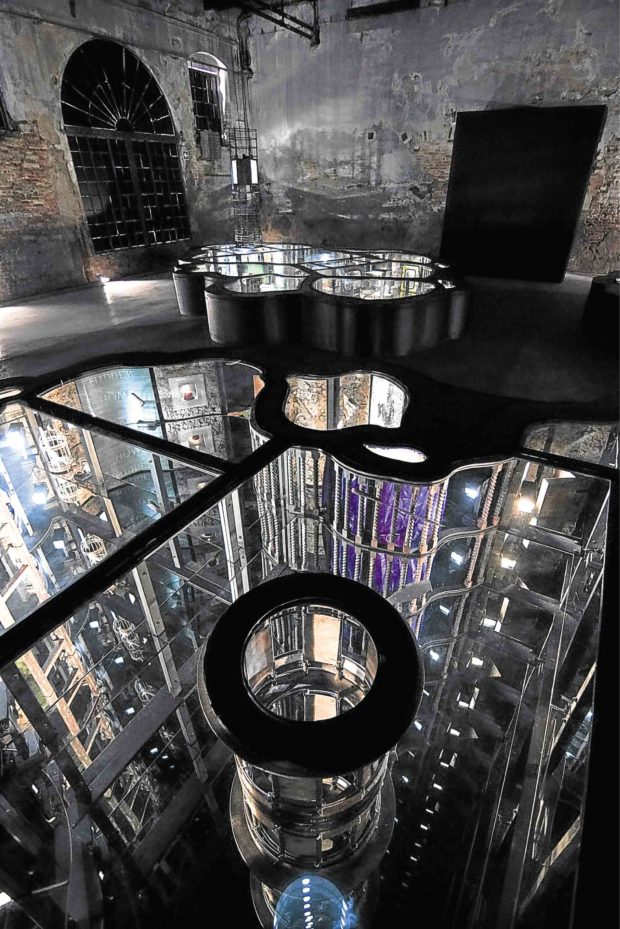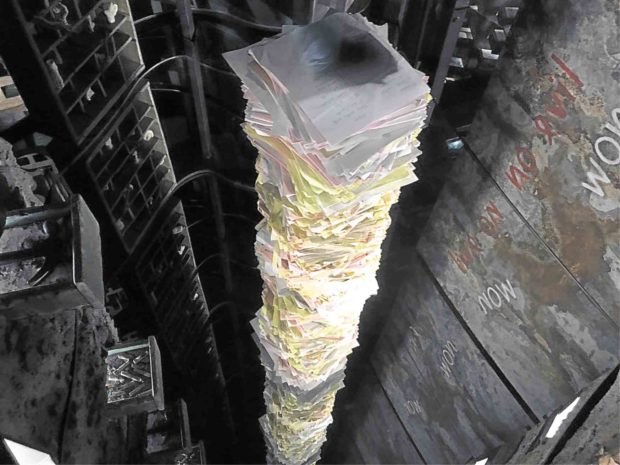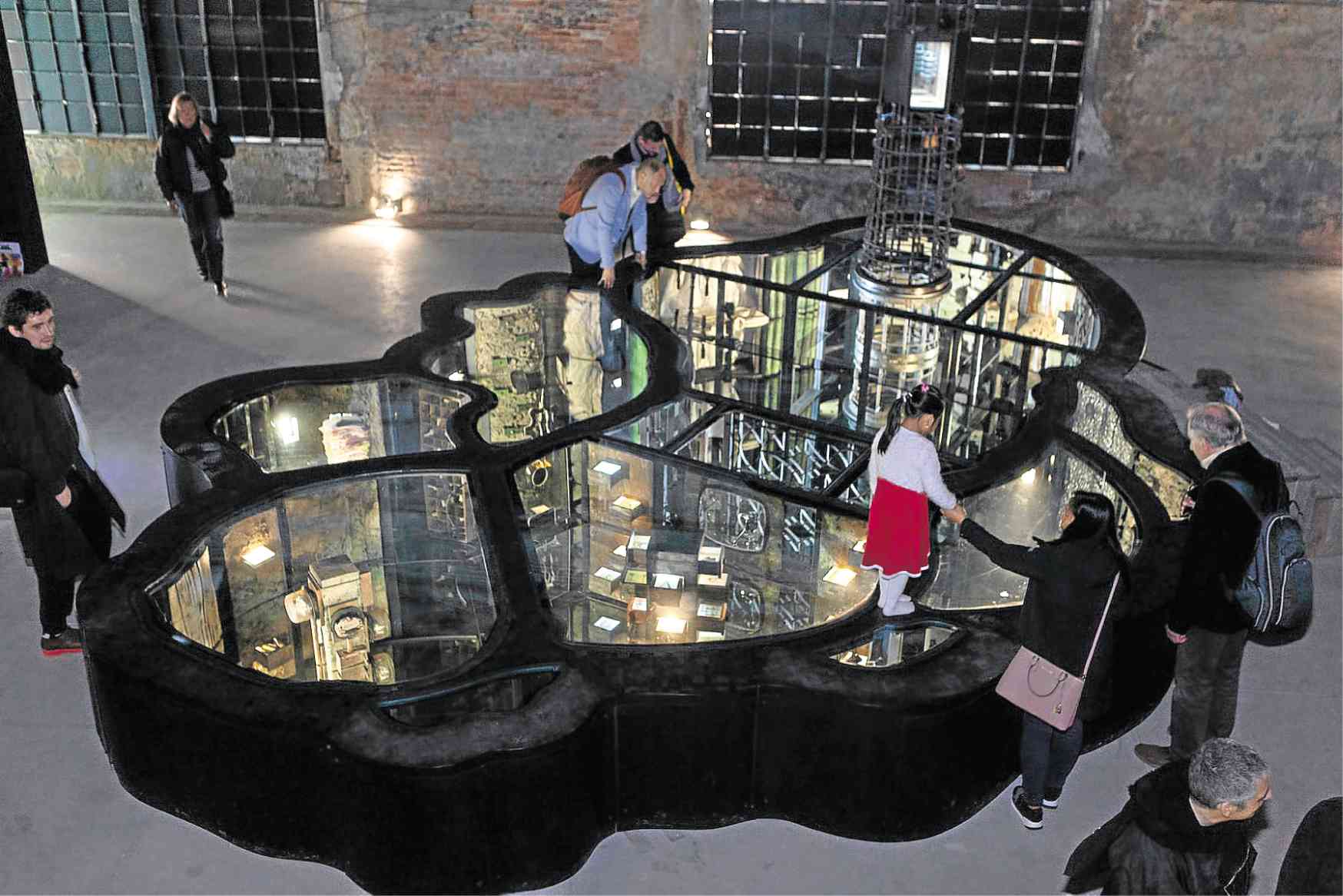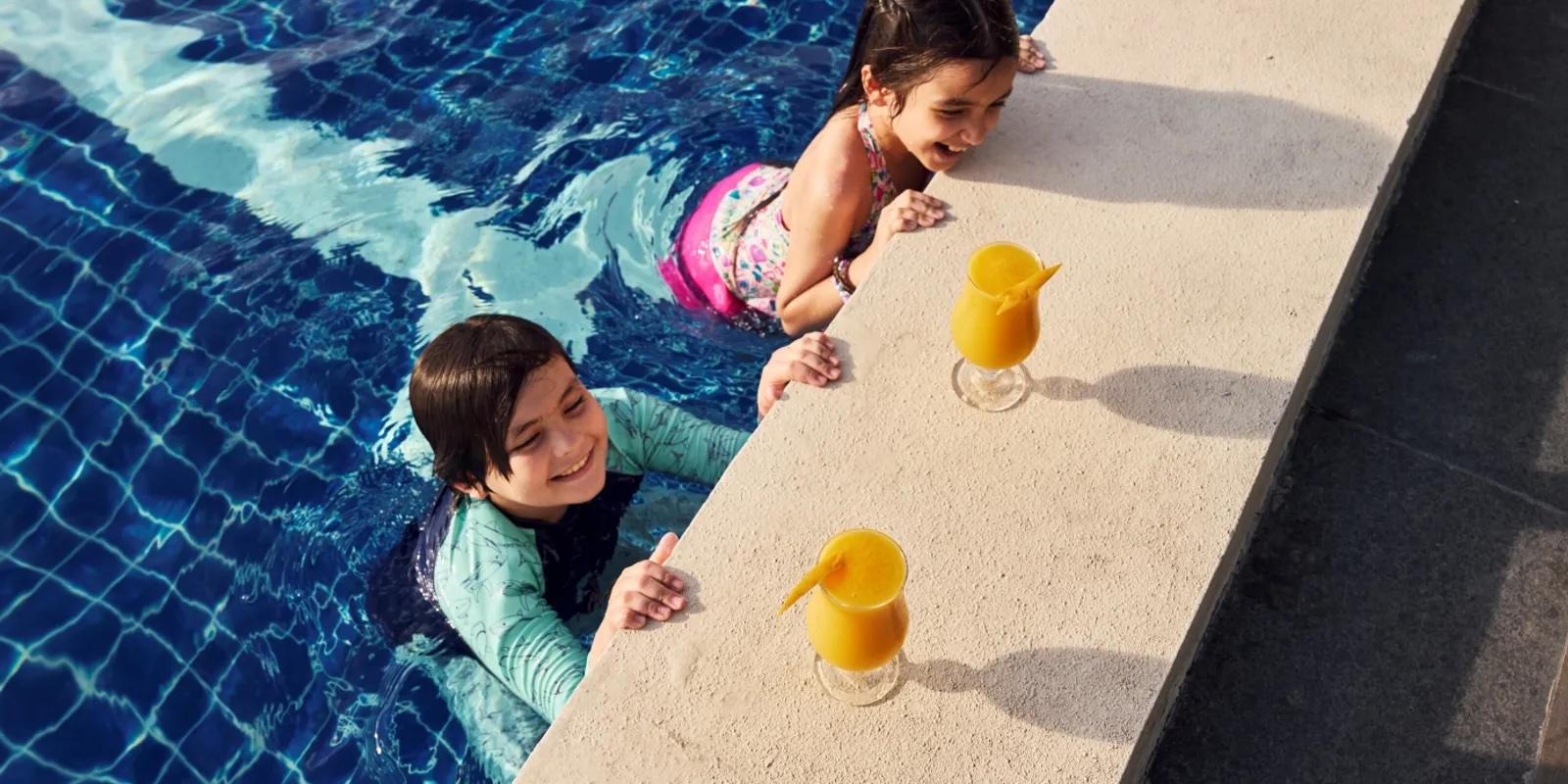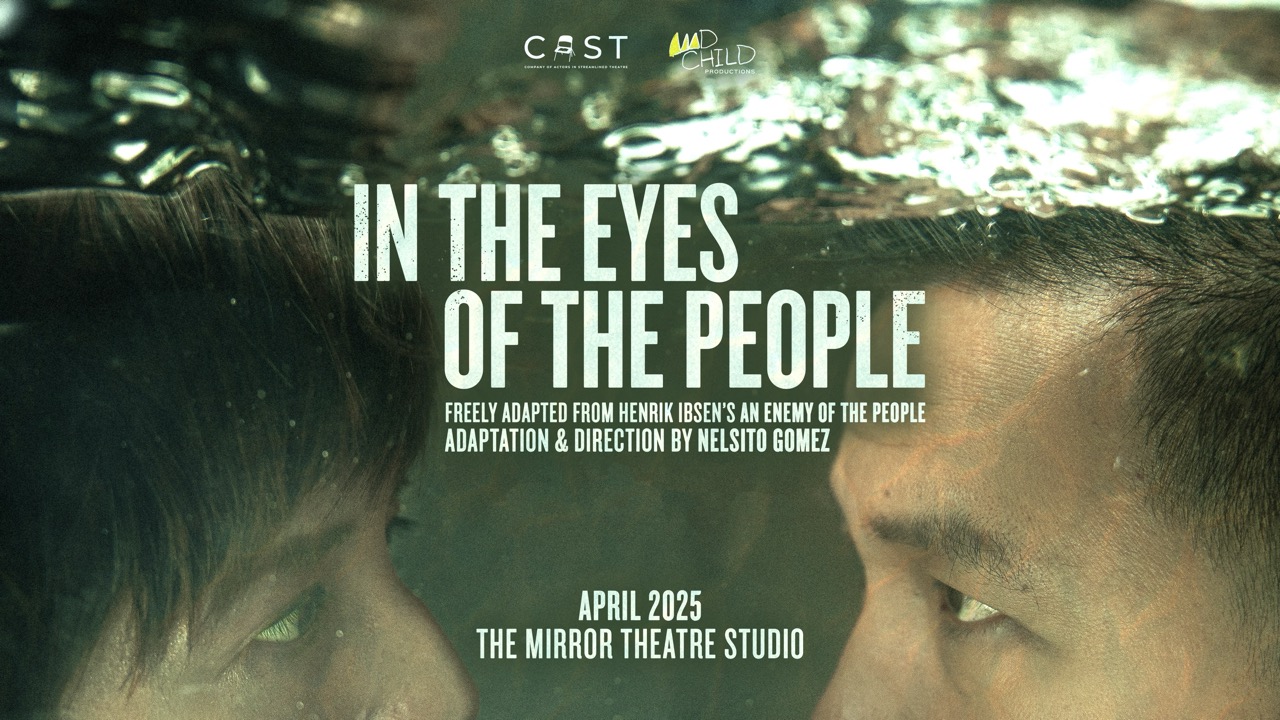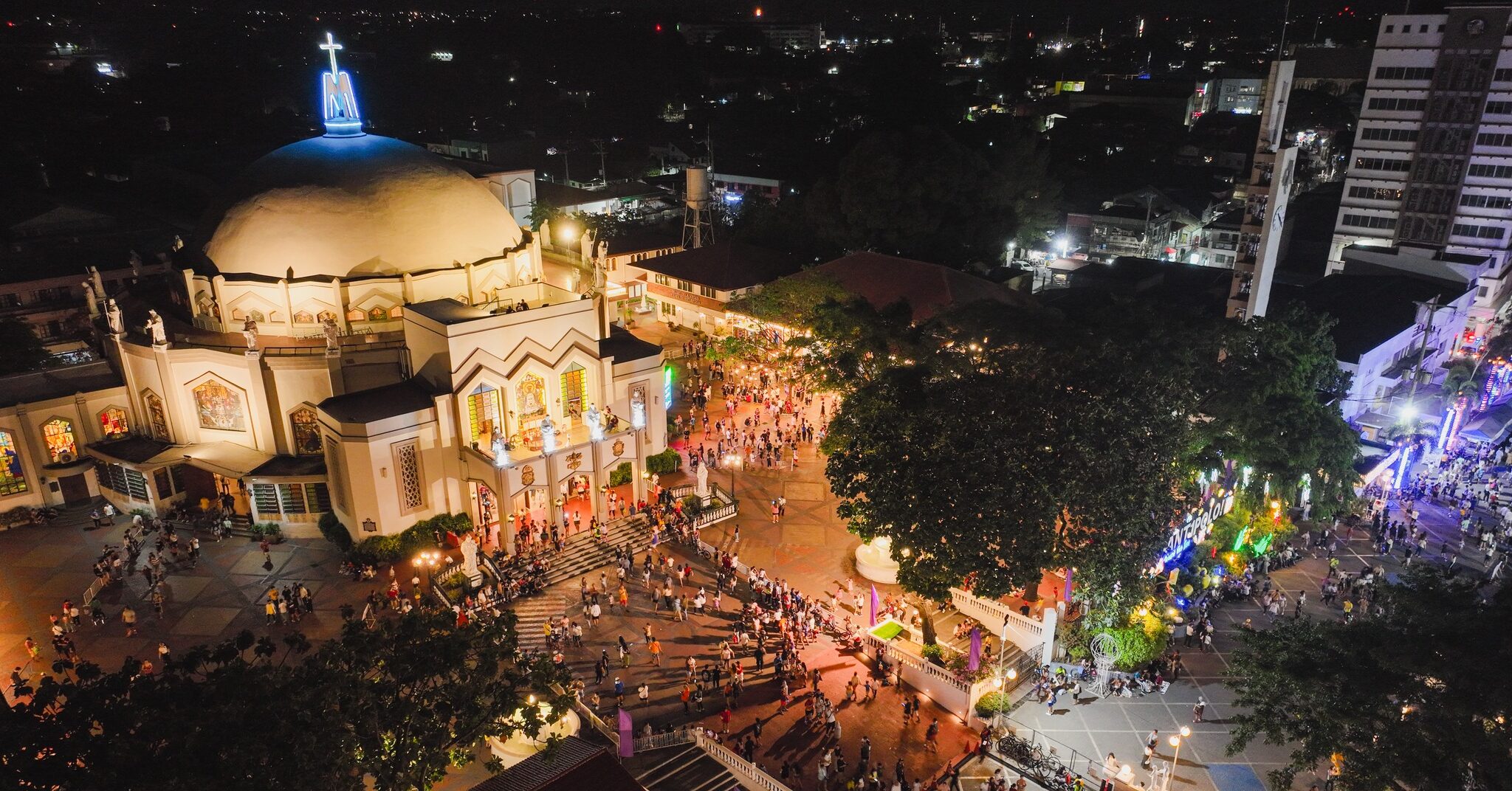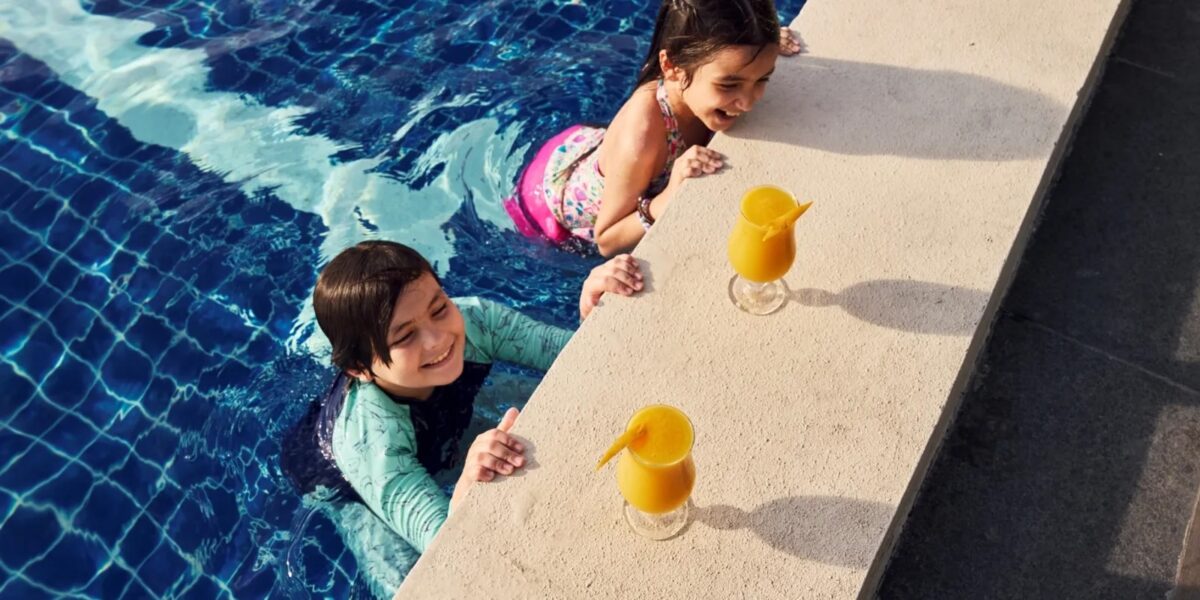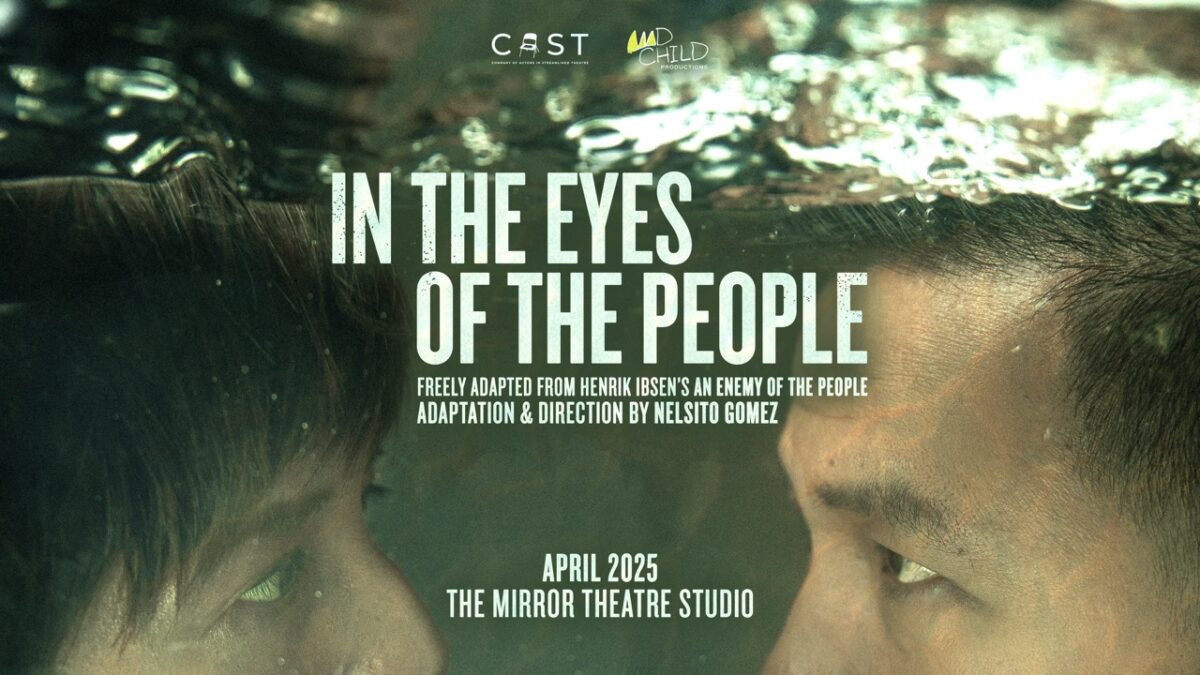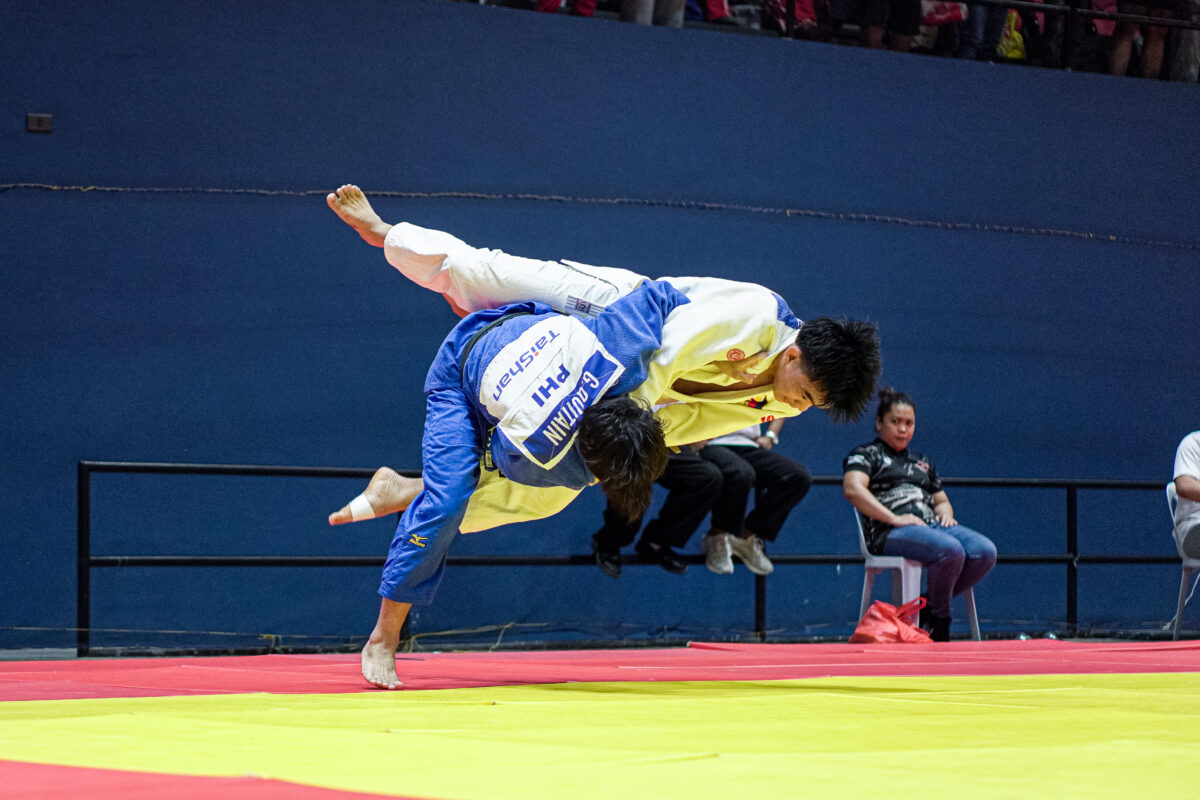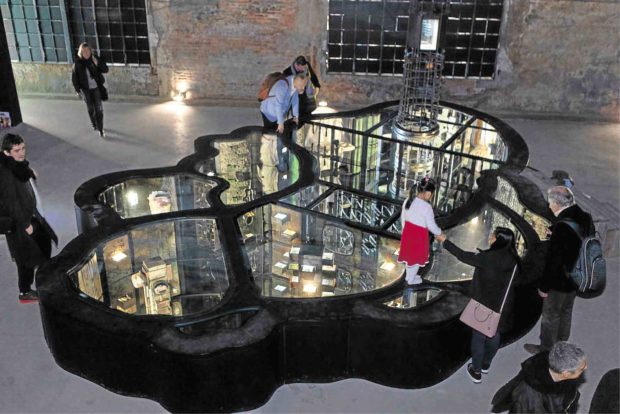
It was awesome!” “We’ve never seen like it before!” “It was damn unique and the best experience so far.” “The best in Biennale. Amazing!”
These were just some of the reactions from people from all over the world who came to visit the Philippine Pavilion during the opening of the 58th Venice Art Biennale in Italy last month and will run until November.
The Artiglierie of the Arsenale, one of the main exhibition spaces, was packed with people curious about the intriguing interactive exhibit dubbed “Island Weather.”
Curated by Tessa Maria Guazon, the exhibit features artist Mark Justiniani and his massive installation titled “Arkipelago.” The exhibition is an exploration of how an archipelagic state such as the Philippines forms its national consciousness shaped by its many islands, which all have its own unique vernacular culture and history.
The theme of this year’s Venice Biennale is “May You Live in Interesting Times.” The show is curated by Ralph Rugoff.
Justiniani’s installation piece for “Island Weather” consists of three island-like structures made of shaped metal frames filled with glass, steel, wood, mirrors and resin, and bound together to create a constructed tableau of the archipelago inside the fully darkened pavilion space. Visitors marvel at the sight of these huge installations and bravely step on the solid glass surfaces—which is only two feet high—to view “downwards” the assemblage of objects underneath their feet.
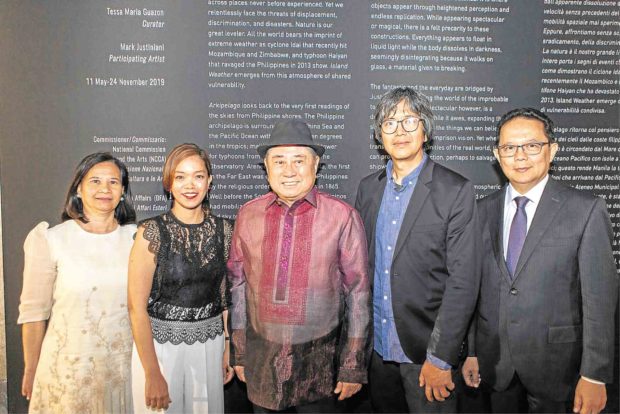
Encased in the massive artwork are significant pieces relating to the various experiences, memories, practices and occurrences that Filipinos live through every day while constantly reliving their past lives—assorted amulets, broken piano keys, stacks of old receipts and electric bills, old books, bamboos, dilapidated chairs and electric meters stacked open each other, to name some.
Justiniani has made the images and objects multiplied visually through optic illusion. The viewing experience encompasses latitude and depth.
Vernissage
The Philippine Pavilion is a collaborative undertaking of the National Commission for Culture and the Arts (NCCA), Department of Foreign Affairs, and the Office of Senator Loren Legarda (now Antique Representative). The formal opening was led by NCCA chair Virgilio S. Almario, Consul General (Milan) Irene Susan Natividad, Philippine Ambassador to Italy Domingo Nolasco, curator Guazon and artist Justiniani.
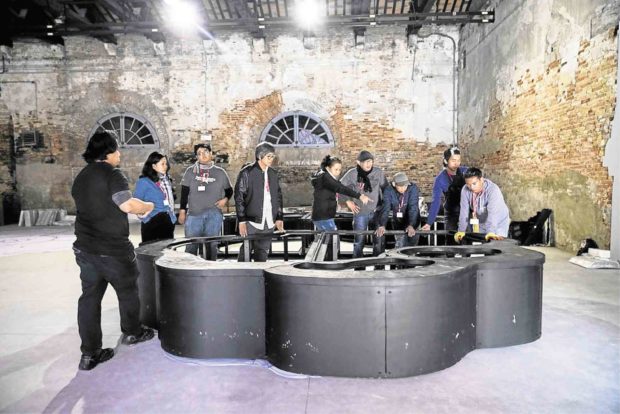
“When we join the global contemporary art stage, we get exposed to the process and discipline of mounting these kinds of exhibitions,” said National Artist for Literature Almario in his opening speech. “Our participation allows us to interact with the global art community which helps inform our own process and thinking.”
Almario emphasized, “Most importantly, our participation in the Venice Biennale gives us a voice to tell our truths and respond to what the rest of the world is discussing.”
“Every year, we are improving in terms of concepts and execution,” Almario said. “Our artworks are becoming more and more noticeable. We set a high standard. This year’s exhibit is more complex than the previous ones. I’ve seen Mark’s works before, so when he presented his concepts in NCCA I knew it would be great and I voted for him.”

Legarda, the prime mover of the country’s return to the Venice Biennale after 51 years of absence, said in a statement delivered by Ambassador Nolasco that Philippine participation in the 58th Venice Art Biennale would make the Philippines a strong presence in world art.
“Apart from bringing the Filipino talent to the global stage, I envision our participation in the Venice Biennale to open more opportunities for the growth of our curators and artists and encourage more Filipinos to unleash their creativity,” she said.
Legarda said she was proud that for five consecutive years the Philippines had maintained its presence in the oldest and most prestigious contemporary art platform in the world, and that the pavilion is now housed at the Artiglierie of the Arsenale, one of the most coveted spaces in Venice.
‘Island Weather’
Guazon’s curatorial concept was selected among 12 proposals that were submitted to the Philippine Arts in Venice Biennale Coordinating Committee.
Guazon said she had in mind only Justiniani, who is known for his immersive large-scale installations and site-specific art, to do the art executions.
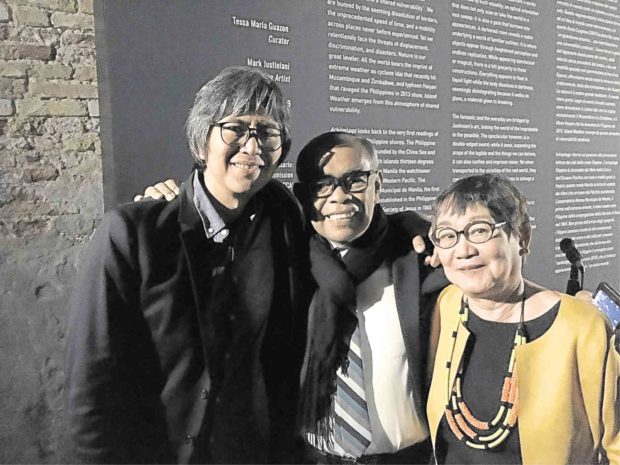
“The project also explores our vision as means of experience in this world,” she said. “We are meant to be disoriented, but we are meant to enjoy as well. As adults we forget to wonder sometimes. We walk on glass and feel as if our body disappears in space but our body remains. We know it’s shallow but we are afraid of falling through but all of it is just an optical illusion.”
Justiniani said he was inspired by magic realism.
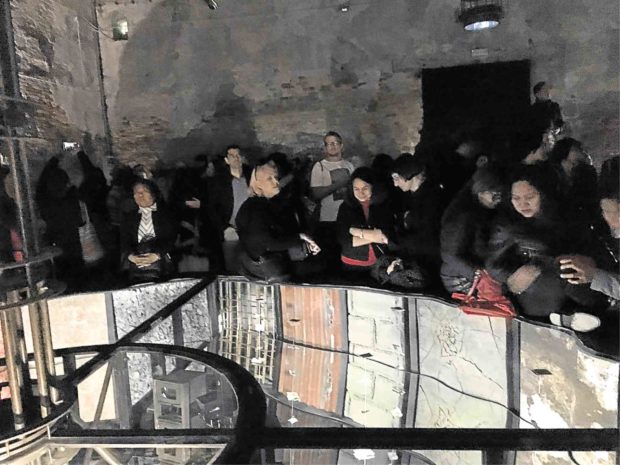
“I like Gabriel Garcia Marquez,” he said. “How he reads and how he combines the real and the fantastic and magical illusions. The mirrors are the most accurate mimicry of the reality. I think it’s still the most accurate replica of what we see around us. It’s two dimensional and when you have two mirrors facing each other you get this kind of infinity image. Our visions are filtered to our senses and we see the world through different color schemes and yet we are blind in some ways.”
The 58th Venice Biennale runs until Nov. 24.
